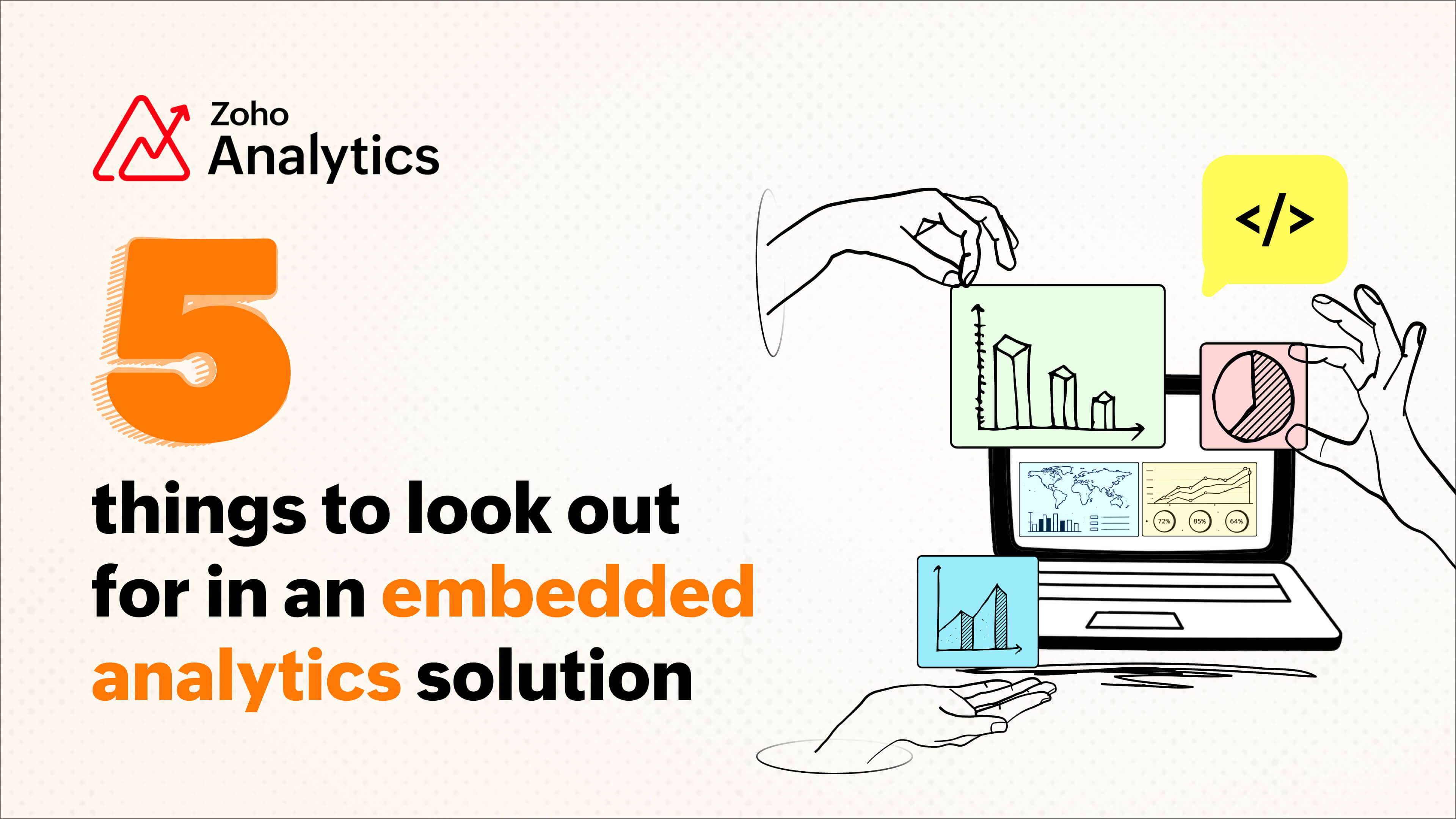The explosive growth of data has increased the pervasiveness of applications with built-in analytics. Gartner predicts that by the end of this year, most enterprise application providers will compete over their product’s level of advanced analytics rather than just core functionalities.
Embedded analytics is a capability that integrates features offered by analytics software—real-time reporting, interactive data visualization, and AI-assisted advanced analytics—directly into an enterprise business application to offer contextual business analytics. Data management is handled by the analytics platform, and the reporting visualizations are placed directly within the application’s UI. This improves the context and usability of all data insights for business users.
Ideally, you don’t want to pick an analytics platform for embedding, only to realize later that it lacks something essential. Hence, to select the right embedded analytics platform, you need to consider a wide range of factors, from technical features, such as analytical capabilities, integration APIs, data architecture, and security, to business capabilities, like customer support and pricing.
The most feasible way to identify the strengths and limitations of an analytics platform is to request a proof of concept, rather than a demonstration. By doing so, you can better understand how effectively the tool can facilitate embedded analytics into your application with usable, interactive data.

So here’s our top five aspects that will help you weigh and identify the right platform for your organization:
- Integration – Look for platforms that not only support embedding of charts and visualizations, but also go finer and deeper by integrating analytics into the fabric of your application seamlessly. This is only possible with a robust set of APIs to handle data updates, natively integrate visualizations, offer interactions, customize styling, manage authentication & authorization, and more. This makes the user experience more seamless, and masks the fact that it is actually a multi-product application.
- Scalability – Give priority to platforms that can scale up with your business needs. Know the volume and variety of data it can handle. Understand the platform’s performance metrics at a deeper functional level. Prioritize providers who offer the optimal balance between performance and scalability. If you are integrating a Cloud Analytics/BI vendor then historical service availability is another key metric to understand.
- Security – Select a platform that is capable of working with your application’s security model (e.g., single sign-on). Also, specifically ensure that the role-based access control in your application can be passed on to the embedded analytics platform in terms of access to its features, such as data, reports, and dashboards.
- Augmentation – Look for machine learning & AI capabilities in areas that can increase the value of embedded analytics. These include things like data preparation, natural language interfaces, and guided recommendations. Augmented analytics can also enable your application for pervasive adoption.
- Support – Apart from researching the analytics platform’s capabilities, also evaluate the nature of the provider—whether they focus on embedded analytics in their list of offerings. Look for providers who can offer engineering and integration support with respect to embedding essentials, such as rebranding and localization. Also check their SLAs, pricing policies when licensing or selling your product.
We hope this article has given you a good idea of how to go about evaluating an embedded analytics platform for your organization.
And if you’re interested in pursuing a solution right away, you can get started with Zoho Analytics to get an idea what our robust platform offers for embedded analytics.
Related posts
Comments